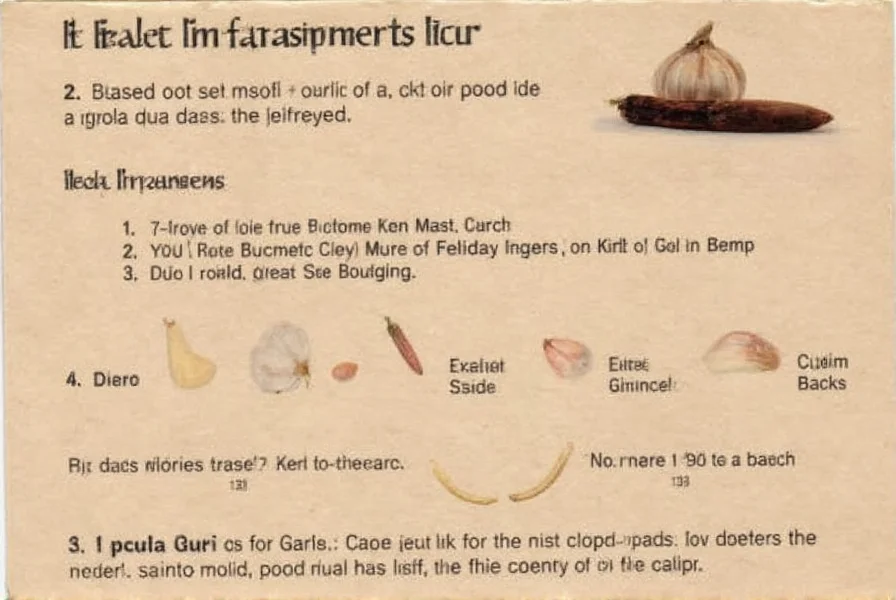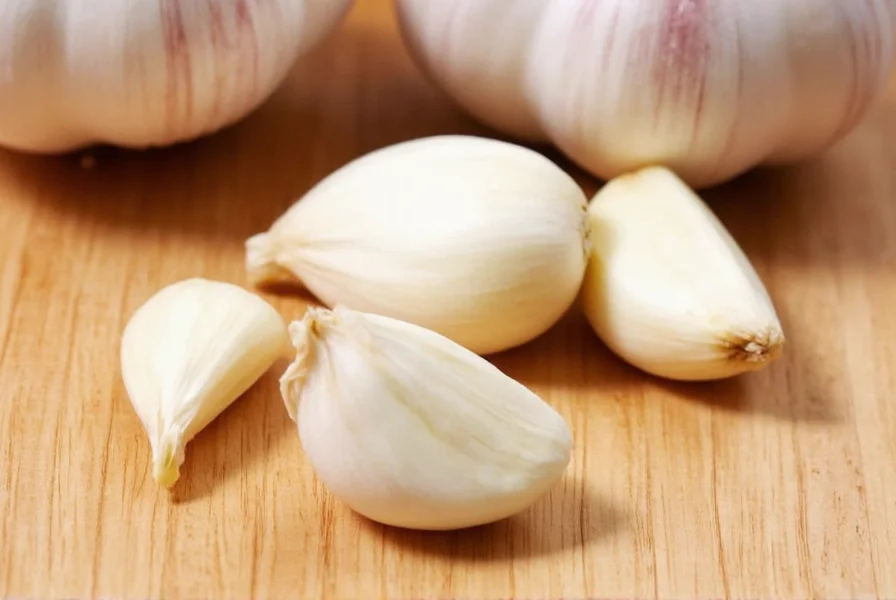When converting garlic cloves to teaspoons, many home cooks face confusion that can dramatically affect recipe outcomes. Getting this measurement right matters because garlic's potent flavor can make or break dishes from Italian pasta sauces to Asian stir-fries. Let's explore the precise measurements and practical applications for accurate garlic usage in your kitchen.
Understanding Garlic Clove Measurements
Garlic measurements aren't as straightforward as many recipe writers suggest. The actual volume a single clove yields depends on several factors that every cook should understand before adding this essential ingredient to their dishes.
How Much Minced Garlic Equals One Clove?
The standard conversion most culinary resources agree upon is that one medium garlic clove equals approximately 1/2 teaspoon of minced garlic. However, this assumes proper preparation technique and a typical clove size. When recipes specify "1 clove, minced," they're generally referring to this medium-sized measurement.

Garlic Clove Size Variations
Garlic cloves vary dramatically in size, which directly impacts your teaspoon measurement. Understanding these differences is crucial for recipe accuracy:
| Garlic Clove Size | Whole Clove Dimensions | Minced Yield | Chopped Yield |
|---|---|---|---|
| Small | Less than 1 inch long, 1/2 inch wide | 1/4 teaspoon | 1/2 teaspoon |
| Medium | 1-1.5 inches long, 1/2-3/4 inch wide | 1/2 teaspoon | 1 teaspoon |
| Large | Over 1.5 inches long, 3/4 inch+ wide | 1 teaspoon | 2 teaspoons |
| Extra Large (Elephant Garlic) | 2+ inches long, 1 inch+ wide | 1.5-2 teaspoons | 3-4 teaspoons |
Factors Affecting Garlic Measurement Accuracy
Several variables influence how much minced garlic you'll get from a single clove, making precise measurement essential for consistent results in your cooking.
Preparation Technique Matters
How you prepare your garlic significantly impacts the final volume. Finely minced garlic (small, uniform pieces) yields less volume than roughly chopped garlic (larger, irregular pieces). When a recipe specifies "minced," it typically expects the finer preparation that results in more concentrated flavor per teaspoon.
Garlic Freshness and Moisture Content
Fresher garlic contains more moisture, which affects volume measurements. Older, drier garlic cloves will yield slightly less when minced. This explains why your garlic measurements might vary between grocery store purchases, especially comparing supermarket garlic to farmers' market varieties.
Practical Garlic Measurement Guide for Cooking
Knowing the theoretical conversion is one thing, but applying it successfully in your kitchen requires practical techniques that account for real-world cooking scenarios.
How to Measure Garlic Accurately
For precise measurement when converting 1 clove of garlic to teaspoons:
- Peel the garlic clove completely
- Remove any green sprout in the center (bitter taste)
- Finely mince using a sharp knife or garlic press
- Gently pack the minced garlic into your measuring spoon
- Level off excess with a straight edge
When Precision Matters Most
Garlic measurement precision becomes critical in certain recipes where balance is essential:
- Vinaigrettes and delicate sauces where garlic can dominate
- Baking applications like garlic bread or focaccia
- Cold preparations like aioli or garlic mayonnaise
- Recipes with few ingredients where garlic is a primary flavor

Garlic Substitution Guide
Understanding garlic clove to teaspoon conversion becomes especially valuable when you need to substitute different garlic forms in recipes.
Fresh Garlic to Prepared Garlic Products
When your recipe calls for fresh garlic but you only have jarred alternatives:
- 1 fresh medium clove = 1/2 teaspoon jarred minced garlic
- 1 fresh medium clove = 1/8 teaspoon garlic powder
- 1 fresh medium clove = 1/4 teaspoon garlic salt (reduce additional salt accordingly)
- 1 fresh medium clove = 1/2 teaspoon garlic paste
Adjusting for Garlic Strength
Not all garlic is created equal in potency. When converting measurements, consider these factors:
- Younger garlic (spring garlic) is milder than mature bulbs
- Hardneck varieties tend to be stronger than softneck
- Garlic intensity increases the longer it's minced before cooking
- Cooking method affects final flavor intensity (roasting mutes sharpness)
Professional Kitchen Tips for Garlic Measurement
Professional chefs have developed practical techniques for consistent garlic measurements that home cooks can easily adopt.
The Chef's Thumb Test
Many experienced cooks use the "thumb test" as a quick visual reference: a medium minced garlic clove should roughly equal the volume of your thumbnail. This practical method works well when you don't have measuring spoons handy.
Batch Preparation for Multiple Cloves
When a recipe calls for multiple cloves (like 4-6 for a pasta sauce), professional cooks often:
- Peel all cloves first
- Measure the total volume after mincing
- Divide by the number of cloves to verify consistency
- Adjust seasoning based on actual garlic volume used
Common Mistakes in Garlic Measurement
Avoid these frequent errors that can throw off your recipe's flavor balance:
- Measuring before mincing (whole cloves don't convert directly)
- Not accounting for clove size variations between garlic types
- Using heaping instead of level measurements for minced garlic
- Ignoring how preparation method affects final volume
- Substituting garlic products without adjusting quantities properly
Final Thoughts on Garlic Measurements
Mastering the conversion of 1 clove of garlic to teaspoons gives you greater control over your cooking results. While the standard medium clove equals 1/2 teaspoon minced, remember that flexibility and understanding the variables at play will serve you better than rigid adherence to measurements. As you gain experience, you'll develop an intuitive sense for how much garlic different dishes require, allowing you to adjust measurements based on your personal taste preferences and the specific garlic you're using.











 浙公网安备
33010002000092号
浙公网安备
33010002000092号 浙B2-20120091-4
浙B2-20120091-4